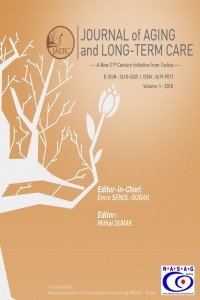
Journal of Aging and Long-Term Care
Yazarlar: Debbie VERBEEK-OUDIJK, Alice DE BOER, İsolde WOITTIEZ
Konular:Beşeri Bilimler, Ortak Disiplinler
DOI:10.5505/jaltc.2019.43153
Anahtar Kelimeler:Informal care,Seniors,Gender,Home care expenditure
Özet: Although most recipients of long-term care are women, due to rising life expectancy among men, future users of care are increasingly likely to be men. There are indications that gender is an important factor in the way in which a country organizes its care, and that social policy can have diverging outcomes on the average health of men and women. Nevertheless, gender differences in the use of care are seldom considered. Research into possible explanations for these differences has focused mainly on differences between individual characteristics of men and women. In addition, this study examines the effect of public spending on professional home care and the average availability of informal care by over-50s on the actual use of care. Data from the Survey of Health, Ageing and Retirement 2004, 2007, and 2013 from eight European countries were used, in combination with OECD data on public spending on professional home care. A multinomial regression with fixed effects was estimated for the correlation between these macro characteristics and individual use of care for men and women separately. Findings show that higher public expenditure on home care is associated with less use of paid care, but also that this is particularly the case among men (“paid care” includes care paid for by the user himself or herself). More plentiful informal care is associated with lower use of paid care, in both men and women. One of the possible implications for future policy on long-term care is that men are relatively more likely to respond to changes in the availability of home care than women and that this responsiveness will become even more marked as the proportion of men using care rises. Key Practitioners Message In social policies and the organization of long-term care, gender differences are seldom considered. This study examines the effect of public spending on professional home care and the average availability of informal care by over-50s for men and women separately. Higher public expenditure on home care is associated with more use of paid care, particularly among men. More plentiful informal care is associated with lower use of paid care, in both men and women. Men are relatively more likely to respond to changes in public spending on home care than women, and this responsiveness will likely become even more marked as the proportion of men using care rises.